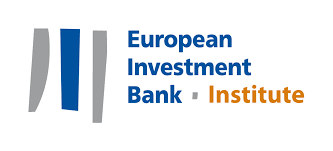Intangibles, Technology Diffusion and Public Policies
Implications for Firm Investment, Market Structure and Aggregate Productivity
Project information:
- Funding body: EIBURS: European Investment Bank Institute
- Period: October 2021 – September 2024
- Principal Investigator: Carolina Villegas
- Coordinating institution: Universitat Pompeu Fabra (UPF)
- Research Team: Andrea Caggese (UPF)
The first part of this project looks at “Intangible Capital and Technology Diffusion: Measurement and Implications for Productivity Growth, Market Power and Wage Inequality”, and aims to study the factors that explain the linkages between technological progress, technology diffusion, and market outcomes. It places a special emphasis on the empirical analysis of firm level data, and focuses on European firms, making use of the EIBIS Survey combined with Orbis information. Moreover, it will also develop and analyse structural models of firm dynamics with both real and financial frictions and productivity enhancing innovation decisions, that allow both for identification and counterfactual policy analysis.
One important element that affects both firm-level investment as well as capital misallocation and long-run growth in Europe is the crucial role played by government policies. The importance of these policies will be even larger in the next few years, since the COVID crisis is currently posing and will continue to pose significant economic challenges to all countries. In a context in which credit is frozen, and many firms stop their operations, governments will have to develop innovative policies to ensure that growth will be restored shortly. In the EU’s particular context, countries’ leaders recently agreed on a comprehensive package of close to €2 billion, which will provide all types of governments throughout Europe (local, regional and national) with many resources. Whether or not this ambitious recovery plan will help rebuild the EU's economic systems will crucially depend on the efficiency with which the newly available resources are allocated across sectors and firms.
The second part of the project will focus on “The Investment-Promoting Role of Government Policy: Measurement and Implications for Capital Misallocation and Long-Run Growth”. We will investigate the importance of the two main policy tools that governments have available to affect the allocation of resources—government expenditure, through public procurement projects, and its associated taxation policies —in promoting private investment. The projects focus the analysis in two dimensions. From the “micro” perspective, we will study the impact of government policies in determining investment and performance at the firm-level. To do this, we will leverage on the increasing availability of comprehensive procurement microdata that can be linked with firm-level datasets. From the “macro” perspective, we will study the aggregate implications of government policies in terms of capital misallocation, propagation of technology shocks, and long-run growth.
This project is possible thanks to:
